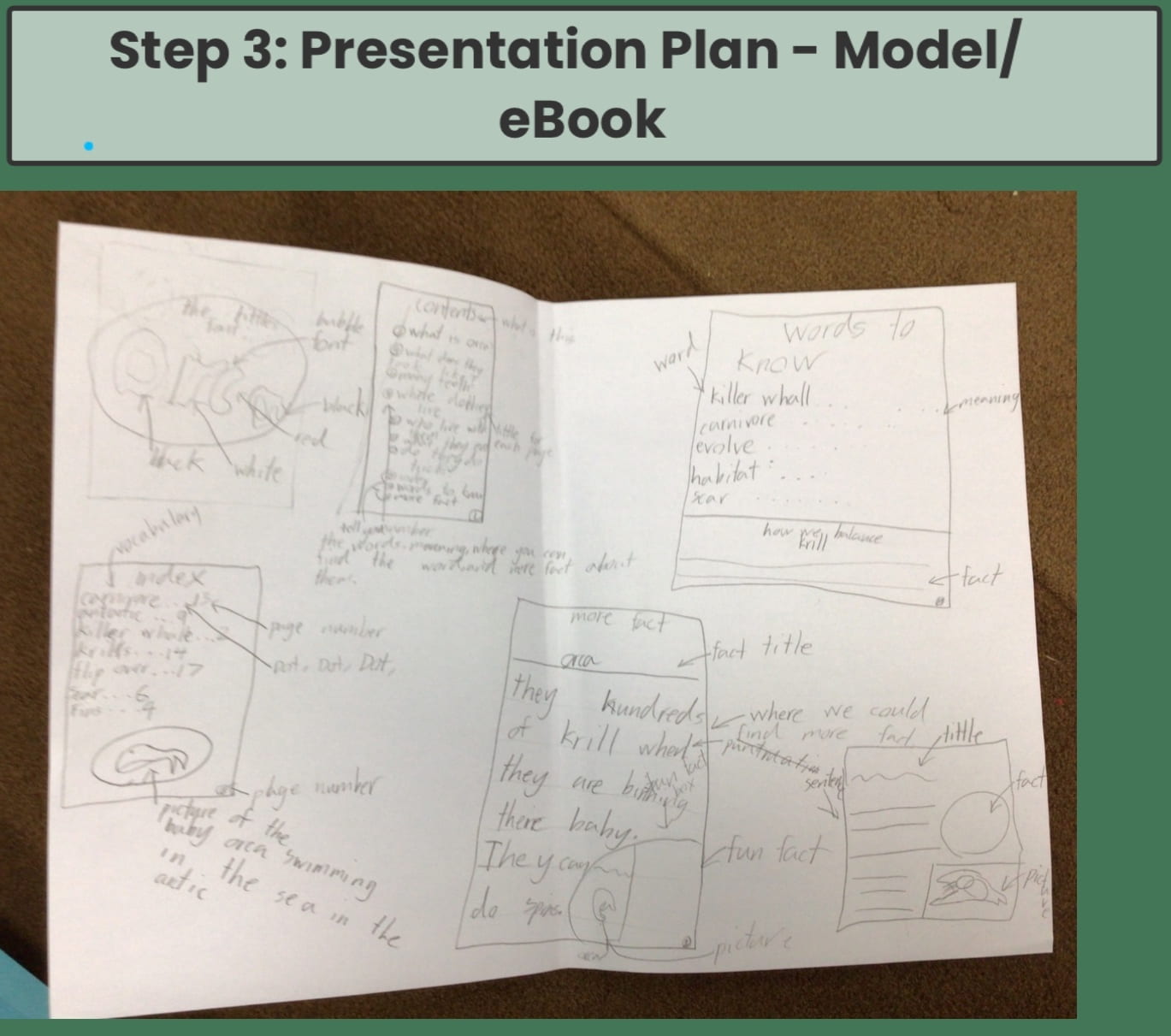Living Things and Ecosystems
- How might we conduct our own research to develop and share our theories about the world?
- How might we explore the interconnectedness of living things and the integral role we play in maintaining balance?
- What action can we take as a result of our learning?
The students have approached and engaged in their research in many different ways. We noticed that some students dived right in, deciding on the living things they were eager to learn more about while a few students observed others engaged in research before deciding on how they might approach their own learning.
The students watched videos, read books and engaged in conversations with other children and adults to learn more about their chosen project (living thing). The students have been taking notes and then making plans on how they might share their learning with others. They used large paper to document their thoughts, questions and possible direction. Their notes included key information, drawings, facts and sketches that directed their next steps. They highlighted key unit vocabulary as they documented big ideas.
- A “I didn’t know that some sharks were from eggs and others were like babies” stated one student.
The children chose to share their learning in two different ways:
- using BookCreator to make their own non-fiction book
- creating a 3Dimentional model (triorama) of a habitat and the different living things that exist in an ecosystem
While engaging in their projects, the students reflected on the following:
- What type of ecosystem would I create?
- What do the different living things in the ecosystem ‘need’ to survive?
- How do they live and grow?
- How can I make sure there is ‘balance’ in my ecosystem?
We noticed that the students thought deeply about the interconnectedness and impact of the different living things in their project. As they planned, designed and created, the adults pushed their thinking further by asking thoughtful, provoking questions, and giving them feedback and suggestions.
- How would you make sure…?
- What impact will… have on…?
- Have you considered what might happen if…?
The students paused to reflect on their own learning journey, thinking about the challenges and big ideas they have uncovered through their own research.
We noticed how the students engaged with the different materials and tools. They were thoughtful about the choices they made, seeking to find the most suitable materials and making conscious decisions about the way they present their ideas, to make sure that they can tell a story of living things through their project.
- L “I want to use sticks from the garden to make my trees.”
- A “I can use real sand to show the seashore. And I can use the shells I picked up from San Ya.”
- D “I want to hang my bird up so that it looks like it is flying.”

 Through their work, the students are learning that research involves:
Through their work, the students are learning that research involves:
- asking or designing relevant questions of interest that can be researched
- making plans for finding necessary information
- gathering information from a variety of primary and secondary sources
- using all senses to find and notice relevant details
- recording observations by drawing, note taking, charting, writing statements
- sorting and categorising information
- noticing relationships and patterns
- presenting information in a variety of ways













